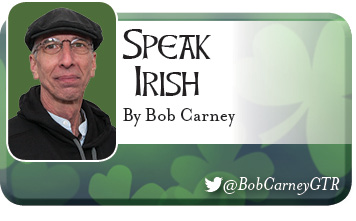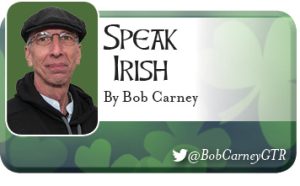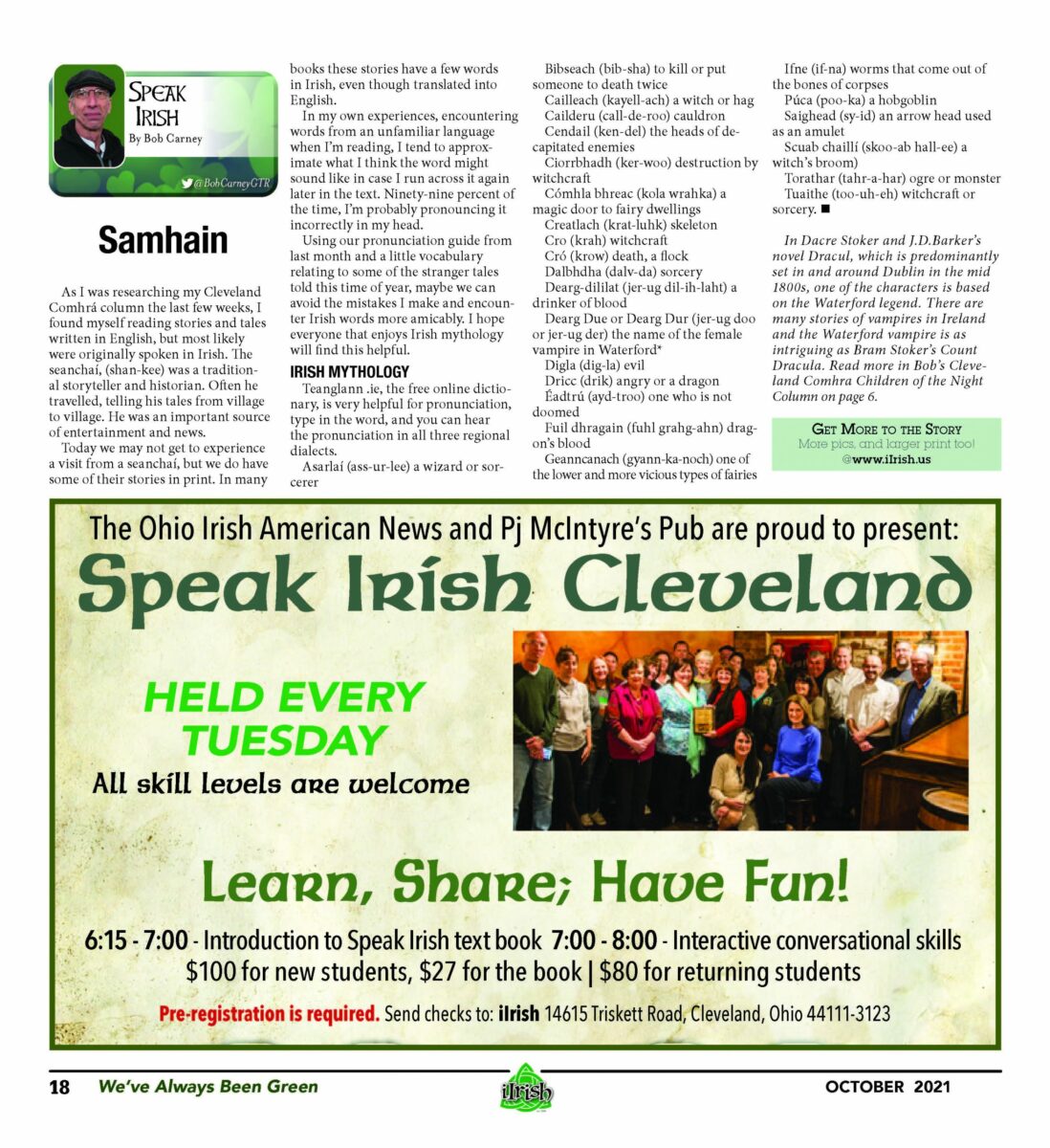
 Speak Irish: Samhain
Speak Irish: Samhain
By Bob Carney
As I was researching my Cleveland Comhrá column the last few weeks, I found myself reading stories and tales written in English, but most likely were originally spoken in Irish. The seanchaí, (shan-kee) was a traditional storyteller and historian. Often he travelled, telling his tales from village to village. He was an important source of entertainment and news. “
Today we may not get to experience a visit from a seanchaí, but we do have some of their stories in print. In many books these stories have a few words in Irish, even though translated into English.
In my own experiences, encountering words from an unfamiliar language when I’m reading, I tend to approximate what I think the word might sound like in case I run across it again later in the text. Ninety-nine percent of the time, I’m probably pronouncing it incorrectly in my head.
Using our pronunciation guide from last month and a little vocabulary relating to some of the stranger tales told this time of year, maybe we can avoid the mistakes I make and encounter Irish words more amicably. I hope everyone that enjoys Irish mythology will find this helpful.
Irish Mythology
Teanglann .ie, the free online dictionary, is very helpful for pronunciation, type in the word, and you can hear the pronunciation in all three regional dialects.
Asarlaí (ass-ur-lee) a wizard or sorcerer
Bibseach (bib-sha) to kill or put someone to death twice
Cailleach (kayell-ach) a witch or hag
Cailderu (call-de-roo) cauldron
Cendail (ken-del) the heads of decapitated enemies
Ciorrbhadh (ker-woo) destruction by witchcraft
Cómhla bhreac (kola wrahka) a magic door to fairy dwellings
Creatlach (krat-luhk) skeleton
Cro (krah) witchcraft
Cró (krow) death, a flock
Dalbhdha (dalv-da) sorcery
Dearg-dililat (jer-ug dil-ih-laht) a drinker of blood
Dearg Due or Dearg Dur (jer-ug doo or jer-ug der) the name of the female vampire in Waterford*
Digla (dig-la) evil
Dricc (drik) angry or a dragon
Éadtrú (ayd-troo) one who is not doomed
Fuil dhragain (fuhl grahg-ahn) dragon’s blood
Geanncanach (gyann-ka-noch) one of the lower and more vicious types of fairies
Ifne (if-na) worms that come out of the bones of corpses
Púca (poo-ka) a hobgoblin
Saighead (sy-id) an arrow head used as an amulet
Scuab chaillí (skoo-ab hall-ee) a witch’s broom)
Torathar (tahr-a-har) ogre or monster
Tuaithe (too-uh-eh) witchcraft or sorcery
*In Dacre Stoker and J.D.Barker’s novel Dracul, which is predominantly set in and around Dublin in the mid 1800s, one of the characters is based on the Waterford legend. There are many stories of vampires in Ireland and the Waterford vampire is as intriguing as Bram Stoker’s Count Dracula. Read more in Bob’s Cleveland Comhra Children of the Night Column on page 6 & 7.
*Bob Carney is a student of Irish history and language and teaches the Speak Irish Cleveland class held every Tuesday @Pj McIntyre’s. He is also active in the Irish Wolfhounds and Irish dogs organizations in and around Cleveland. Wife Mary, hound Morrighan and terrier Doolin keep the house jumping. He can be contacted at [email protected]


Monthly newsmagazine serving people of Irish descent from Cleveland to Clearwater. We cover the movers, shakers & music makers each and every month.
Since our 2006 inception, iIrish has donated more than $376,000 to local and national charities.
GET UPDATES ON THE SERIOUS & THE SHENANIGANS!